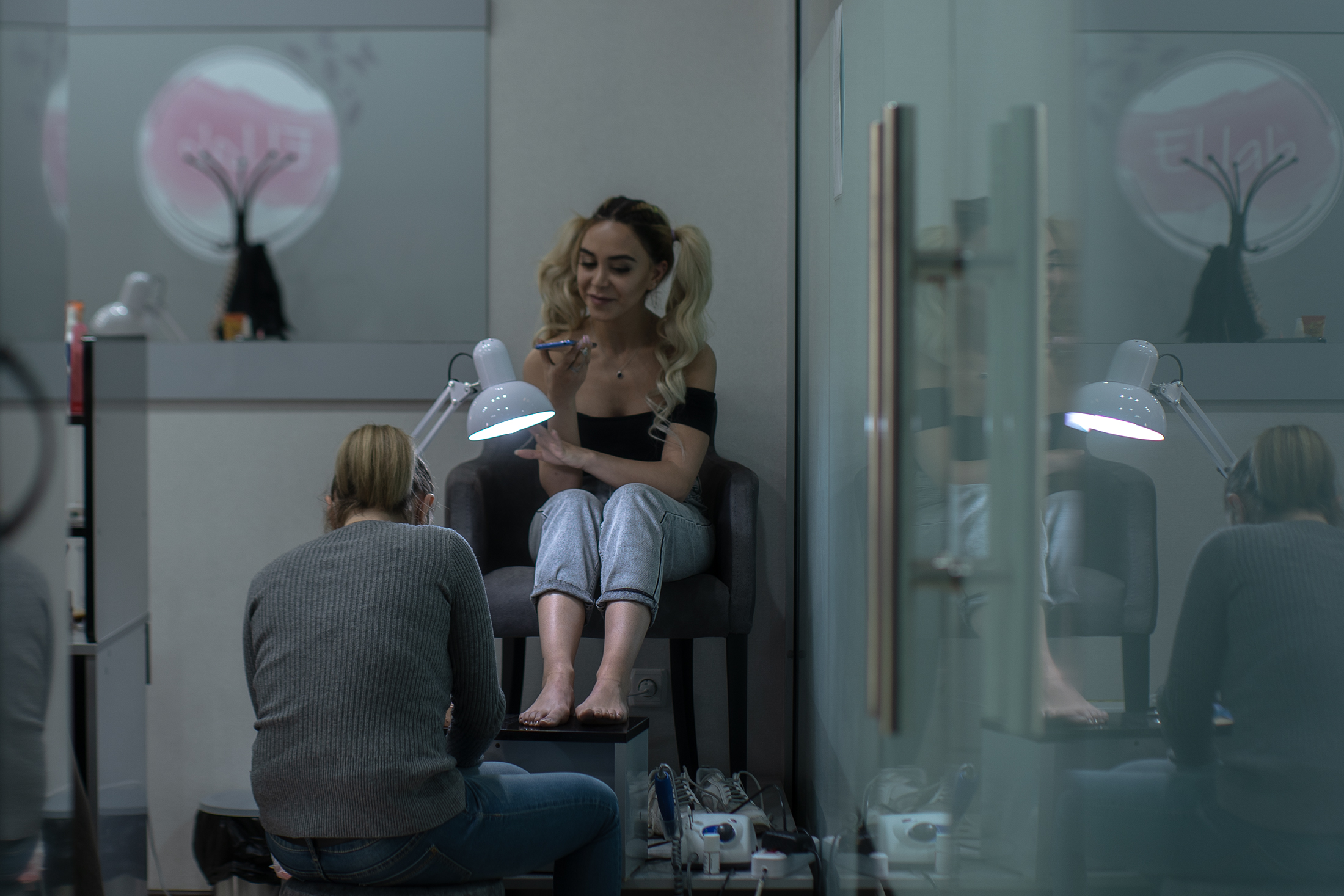From sex education to comedy, Armenians embrace the wonders of TikTok
When sexologist Andronis Gharibyan, 34, joined TikTok, his aim was to educate young people about their bodies, not become a social media personality.
But today, after less than a year on the platform, teenagers are stopping him on the street in the Armenian capital, asking for photographs with the famous doctor-Tiktoker.
At first the label upset him, Dr. Gharibyan recalls. Then he decided to embrace it.
“At first I did not accept that idea… Why did I study medicine for 15 years? To be called a TikToker? I perceived it as a terrible humiliation,” he says. “Then I gradually … came to terms with it.”
Today he introduces himself as “the most famous doctor in the universe and Tik Tok.” Under the handle @dr.andronis, Dr. Gharibyan tries to balance information and entertainment to educate young Armenians about safe sex, their bodies and every other sex-related question they are afraid to ask in real life.

So far, his formula appears to be working: since joining in August 2020, Dr. Gharibyan has attracted over 50,000 followers, providing them with a mix of TikTok dances and medical insight. He has tackled myths about mother-in-laws’ ‘virginity tests’—the tale-tale spot of “blood” that should appear after the wedding night. He also tries to reach parents, teaching them how they should talk to their children during puberty and how to explain to the child what is happening to their bodies.
He has also had an impact on adults: over the past few months, he has noticed more and more women speaking openly their fear of sex. “If a few years ago I worked with one woman a month, as a result of providing information on different platforms, now I have two to three visitors a day asking me about that condition,” Dr. Gharibyan says.
“Higher awareness makes a difference. People are healed, they live happily.”
While he is popular with his followers, Dr. Gharibyan has faced criticism, especially from parents and fellow doctors.
“The doctors think that I registered on a social network to find clients. In fact, I do not need more clients, but even so, I am not doing anything wrong, I create educational content,” he says.
“I provide more serious professional instructions on Facebook, and I present myself in a humorous style on TikTok. If we follow the international experience, we will see that well-known doctors of many reputable clinics have TikTok pages.”

Dr. Gharibyan is an example of a new generation embracing TikTok following the pandemic, noted Media expert Samvel Martirosyan.
While Facebook is still the most popular social media site in Armenia, with 1.5 million registered users, TikTok is quickly evolving from a kids’ app for funny dance videos to an influential platform, Martirosyan notes.
“If at first it was a playground for school children, now there are more adults. The epidemic itself helped people from loneliness to start presenting various nonsense and oddities on TikTok, dispel boredom and find some joy,” he says.
Martirosyan notes that there are no official statistics on the number of TikTok users in Armenia, although specialists estimate it is around a half a million—a large enough number for journalists and politicians to start using the platform, he adds.
But in general, most TikTokers are still using the app to follow global trends, according to Martirosyan—funny videos, dances, clips from famous movies.
“TikTok has one unique trait: unlike other social networks, it is much easier to build an audience, it is much easier to become famous compared to other social networks,” he adds, which has bolstered its popularity.

Fame came for Alex Aleksanyan, 22, almost overnight. A waiter before the pandemic, he was left unemployed when Armenia entered lockdown last March. Stuck at his home in the Armenian city of Gyumri, Alex turned to TikTok for amusement.
Soon the jokes, impersonations and pranks he posted at @alex.alexis attracted 74,000 followers.
As a former theater major, the platform appealed to Aleksanyan as a way to try on different personalities and experiment with his looks.
“In Gyumri, people knew me as Alex, then with TikTok, when I became famous, they already knew me as Alex of TikTok, but they did not recognize me as Alex,” he recalls.
“Those who know me online would think that I am not a serious person, because my videos were humorous. In real life I am very serious, even complex.”
The dissonance between his online persona and his real life blurred, however, after people started making rude comments about his clothes and appearance. In conservative Armenian society, videos depicting him with fashionable haircuts or in shorts led to a torrent of online abuse.
“One person considers me fashionable; another says I do not have the typical appearance of an Armenian boy, so I am gay. And they write very bad words in the comments,” Aleksanyan notes, adding that if he were gay, he would say so openly. But he tries to take the criticism in stride. He notes that before he joined TikTok, he also wore shorts and had a stylish haircut and no one said anything to him about it.

“People will think that Alex is a glamorous, sweet type, but “Alex” is not so sweet when they write bad comments about me and my parents. They say the hair is styled, lensed, eyebrows plucked, that this is gay. I also copy the style of a qyartu (tough, stereotypical) boy. Once I straightened my hair like everyone else, I took off my lenses and you know hundreds of people became followers, what, I changed my hair, and am I not a gay anymore?”
Over the past several months, Aleksanyan has noticed people changing, and the comments have become more positive, even from people in his hometown.
“Many people adapted, they started to love me, they say, ‘he is our Alex.’ Some see me on the street, saying he is Alex of TikTok and celebrating my success with me or maybe not taking me seriously, but the image and the reality are different,” he says.
“I will change people, but I will not change, I will stay as I am or become the one who I want to be.”
Sociologist Tereza Khachatryan notes that social media provides people with a platform to explore their personalities. But it also carries the risk of blurring reality and fantasy too much.
“Social networks define a new way of life and behavior,” she says.
“There is a process of imitation, that is, a person has a certain image in his essence, a desirable image, which he creates in the social platform. It turns out that the difference between the desired and existing image is huge.”
For some Armenian TikTokers, the gulf between reality and fiction is the best part of the platform, however.

Ella, 23, created an entire persona when she joined TikTok in March 2020. In real life, she was a shy, IT professional. As @Ella_moon, Ella, who requested Chai Khana not publish her surname, has blossomed into an extravert who loves to pose and be photographed.
“TikTok gave me self-confidence. I used to have low self-esteem. I used to be ashamed to make videos, I used to edit my photos a thousand times with Photoshop. But now I am not ashamed to take pictures without makeup, or leave the house,” she says.
“People who look at me on TikTok think that I am a meaningless person, a little crazy, but I do not think you have to show that you are very smart on a social network. You have intelligence and knowledge and it is for you, it is for your work, not to exhibit.”

DONATE NOW

